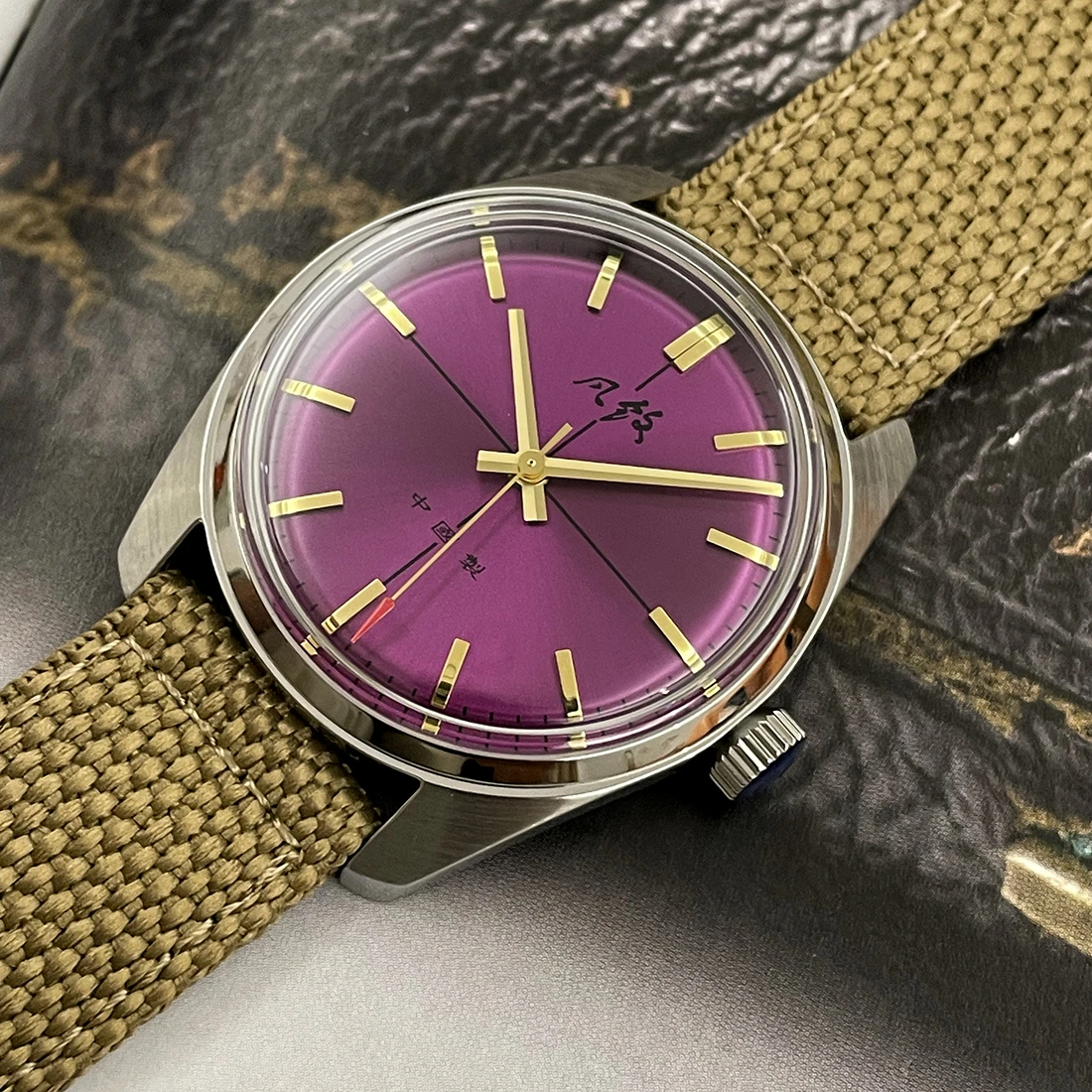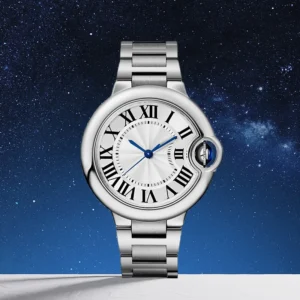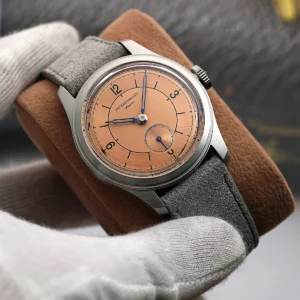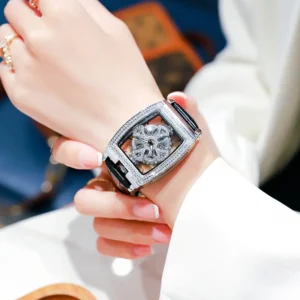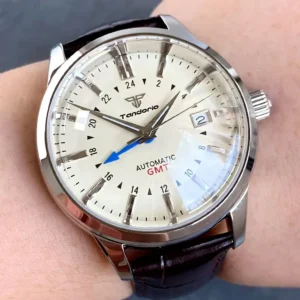Understanding the Dress Watch: An Introduction
A dress watch represents the pinnacle of horological refinement—a timepiece designed specifically to complement formal attire while adhering to principles of elegance and discretion. Unlike their sportier counterparts, dress watches aren’t created to withstand extreme depths or track multiple time zones. Instead, they excel at their primary purpose: telling time beautifully while serving as a sophisticated accent to formal wear.
The concept of the dress watch emerged in the early 20th century as pocket watches transitioned to wristwatches. Elite social occasions demanded timepieces that would complement, rather than disrupt, the clean lines of formal attire. This established a distinct category of watches defined by slim profiles, minimalist dials, and refined aesthetics.
Throughout this guide, we’ll explore the key features that define a true dress watch: slim cases that slide effortlessly under shirt cuffs, uncluttered dials that prioritize readability, limited complications that maintain aesthetic balance, premium materials that signal quality, and modest sizes that ensure elegance rather than ostentation.
Definition: A dress watch is a refined timepiece characterized by a thin profile, clean dial, minimal complications, and elegant design, specifically intended to complement formal attire while adhering to principles of understatement and sophistication.
Understanding the distinct features of dress watches helps enthusiasts appreciate the thoughtful design decisions that make these timepieces perfect for formal occasions.
I. The Philosophy Behind the Dress Watch
Dress watches embody the philosophy that true elegance lies in restraint. Unlike tool watches designed to solve practical problems, dress timepieces focus on aesthetic refinement and social appropriateness. Their design language speaks through what isn’t there as much as what is—every element exists in careful balance, with nothing superfluous to distract from the harmonious whole.
“A dress watch whispers rather than shouts. It complements rather than competes. Its beauty lies in what has been removed, not what has been added.” — Horological principle
This principle of refined minimalism traces back to the golden age of watchmaking when formal timepieces were developed specifically to pair with black tie and formal business attire. The dress watch is meant to complement the overall ensemble, not overpower it. It signals attention to detail and appreciation for craftsmanship without demanding attention.
The contexts for dress watches remain largely unchanged: formal evening events, business settings, milestone celebrations, and occasions where one’s best attire is appropriate. In these settings, a dress watch fulfills both practical and symbolic roles—keeping time while also serving as a subtle signal of taste and discernment.
The defining characteristics of classic dress watches have remained remarkably consistent throughout decades of changing fashion trends. This timelessness speaks to the enduring philosophy behind their design—elegance that transcends seasonal styles.
II. Essential Features of a True Dress Watch
A. Slim and Sleek Profile
A true dress watch is characterized by its thin profile, typically measuring between 5-10mm (0.2-0.4 inches) in thickness. This slenderness serves a practical purpose—allowing the watch to slide smoothly beneath a shirt cuff without catching or creating unsightly bulges. The seamless integration with formal attire represents one of the most fundamental aspects of dress watch design.
Creating such slender timepieces presents significant technical challenges for watchmakers. Ultra-thin movements require exceptional engineering to maintain reliability while reducing dimensions. Every component must be precisely crafted and arranged to minimize thickness without compromising performance.
The contrast with sports watches is stark—while dive watches might measure 13-16mm thick to accommodate pressure resistance and chronographs even thicker to house complex mechanisms, dress watches prioritize sleek elegance over rugged functionality.
Many watch enthusiasts specifically seek out thin automatic dress watches for their ability to achieve mechanical excellence while maintaining the refined proportions essential for formal wear.
B. Minimalist and Uncluttered Dial
The dial of a dress watch serves as its face to the world—and simplicity reigns supreme in its design. Traditional dress watch dials avoid excessive ornamentation, opting instead for clean layouts that prioritize legibility and refinement.
Key elements of classic dress watch dials include:
- Hour markers: Simple batons, subtle Roman numerals, or refined Arabic numerals
- Hands: Slim, elegant designs like dauphine (tapered), leaf, baton, or needle styles
- Colors: Predominantly neutral tones—white, black, silver, champagne, or navy
- Textures: Subtle sunburst finishes, opaline surfaces, or simple matte textures
- Branding: Discreet logo placement and minimal text
This visual restraint isn’t merely about aesthetics—it speaks to the watch’s purpose. In formal settings, one checks the time discreetly, with minimal fuss. A clean dial allows for instant readability without drawing undue attention.
The definitive guide to dress watch design explores how these elements work together to create timepieces that exemplify refinement without sacrificing functionality.
C. Limited or No Complications
In watchmaking terminology, “complications” refer to any function beyond simple timekeeping. While sports watches often showcase multiple features like chronographs (stopwatches), dive bezels, or GMT functions, dress watches typically maintain simplicity with few, if any, additional functions.
| Acceptable Dress Watch Complications | Less Traditional for Dress Watches |
|---|---|
| Date display (preferably subtle) | Chronograph functions |
| Small seconds subdial | GMT/dual time displays |
| Moon phase (if elegantly executed) | Rotating bezels |
| Power reserve (discrete) | Large date windows |
The date window represents the most common concession to practicality in dress watches, though purists might argue that even this small addition disrupts the dial’s symmetry and clean lines. When present, date displays are typically small and color-matched to blend harmoniously with the dial.
This simplicity of function reinforces the dress watch’s primary purpose: elegant time-telling rather than technical utility. Understanding the principles of minimalist dress watches helps appreciate why these timepieces excel through restraint rather than feature abundance.
D. Premium Materials
Dress watches distinguish themselves through the quality of their materials, which must convey refinement while withstanding the test of time. Traditional case materials include:
- Precious metals: Gold (yellow, rose, white), platinum
- Fine stainless steel: Highly polished or with subtle brushed elements
- Occasionally: Sterling silver, titanium, or other premium metals
Strap options for dress watches are similarly refined:
- Leather: Alligator, crocodile, calfskin, or ostrich in black, brown, or navy
- Metal bracelets: When present, they feature slim, elegant designs rather than bulky links
- Exotic options: Shell cordovan, sharkskin, or other fine leathers for distinctive character
Crystal materials prioritize clarity and scratch resistance, with sapphire crystal being the premium choice due to its exceptional hardness and optical properties.
These material choices serve both practical and symbolic purposes—they must endure for decades while also conveying the watch’s status as a refined accessory. Many automatic dress watches combine these premium materials with sophisticated mechanical movements to create timepieces worthy of heirloom status.
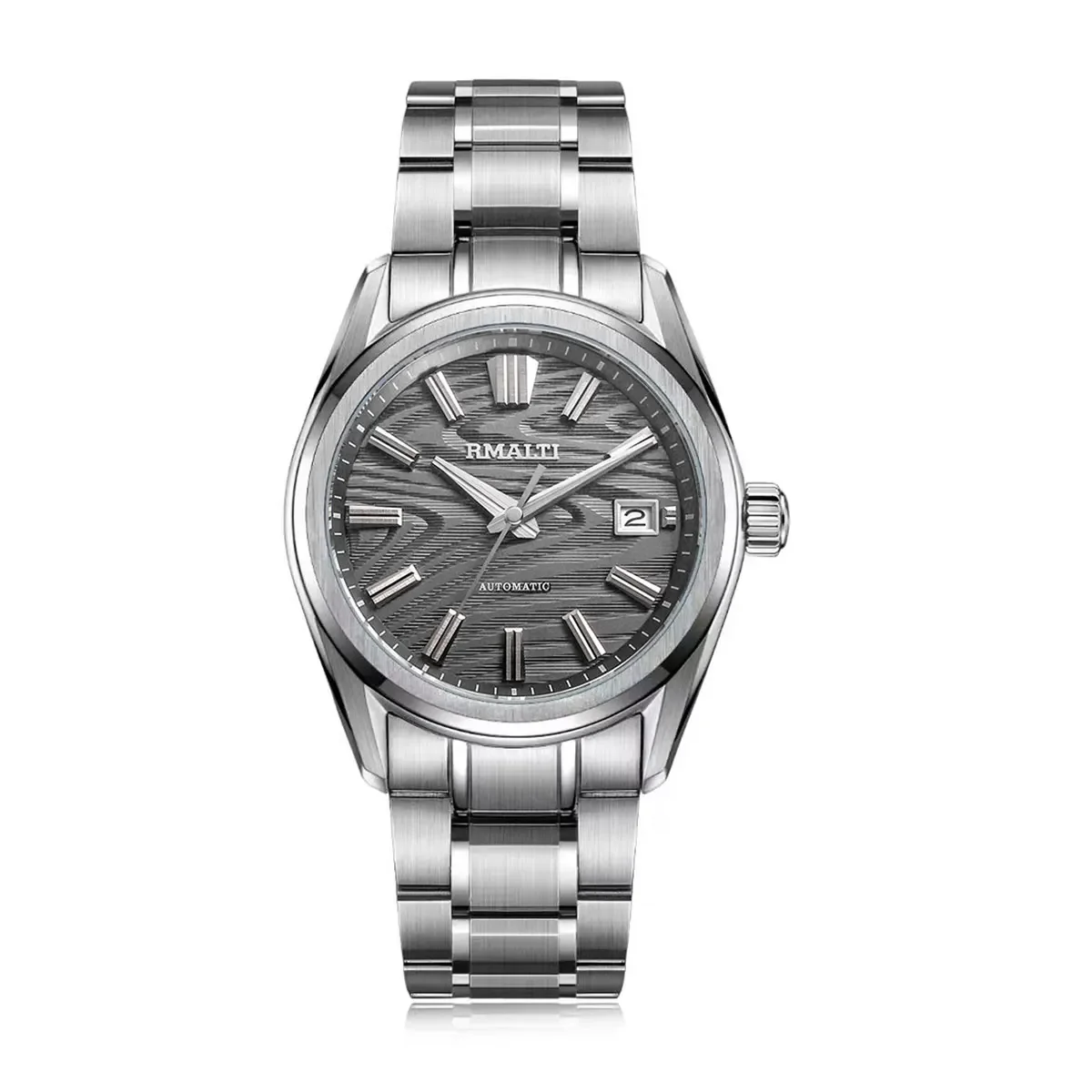
E. Modest Case Size and Classic Shapes
Dress watches typically feature modest case diameters ranging from 34-40mm (1.3-1.6 inches), in stark contrast to the larger sports watches that can exceed 44mm. This conservative sizing complements formal attire rather than dominating it, while also ensuring comfort during extended wear.
The most traditional dress watch shape is round, reflecting horological heritage dating back to pocket watches. However, several other classic shapes have established themselves in the dress watch category:
- Rectangular: Offering architectural elegance with clean lines
- Tonneau: Barrel-shaped cases that contour elegantly to the wrist
- Cushion: Softened square shapes that balance uniqueness with refinement
- Oval: Less common but distinctively elegant when properly proportioned
These case shapes remain largely consistent over time, rarely changing dramatically with fashion trends. This timelessness is intentional—a quality dress watch should look as appropriate a decade from now as it does today.
The case size trends in dress watches show subtle evolution rather than dramatic shifts, maintaining the essential character that defines the category.
F. Elegant Hands and Indices
The hands and indices of a dress watch may seem like minor details, but they significantly impact the timepiece’s overall character. Common hand styles include:
- Dauphine: Tapered, faceted hands that catch and reflect light
- Leaf: Elegant, slightly curved hands with pointed tips
- Sword: Straight, slim hands with sharp points
- Baton: Simple stick hands that match the hour markers
These elements must be perfectly proportioned to the dial size and to each other. Hour and minute hands should be distinct but harmonious, with the seconds hand (when present) adding a touch of refinement without visual distraction.
Indices—the hour markers on the dial—typically favor simplicity through applied markers, Roman numerals, or slim Arabic numerals. These elements are often polished to catch light subtly and enhance legibility without ostentation.
The relationship between hands, indices, and the overall dial creates the visual harmony that distinguishes exceptional dress watches from merely adequate ones.
III. Distinguishing Dress Watches from Other Timepieces
A. Dress Watch vs. Sports/Tool Watch
Dress watches and sports watches represent fundamentally different approaches to horology, each optimized for their intended purpose:
| Feature | Dress Watch | Sports/Tool Watch |
|---|---|---|
| Case thickness | 5-10mm (0.2-0.4”) | 12-16mm (0.47-0.63”) |
| Diameter | 34-40mm (1.3-1.6”) | 40-45mm+ (1.6-1.8”+) |
| Water resistance | Minimal (30-50m) | Substantial (100m-300m+) |
| Dial | Clean, minimal | Feature-rich, highly legible |
| Complications | Few or none | Multiple (timing, tracking, measuring) |
| Materials | Precious metals, fine leather | Durable steel, rubber, NATO straps |
| Crystal | Flat sapphire or mineral | Domed, often with anti-reflective coating |
This distinction reflects the fundamental difference in purpose: dress watches prioritize aesthetics and social appropriateness, while sports watches emphasize functionality in specific environments. A dive watch must be legible underwater and withstand pressure; a dress watch must complement formal attire and convey refinement.
Understanding these differences helps watch enthusiasts appreciate each category on its own terms rather than applying inappropriate standards across categories. For those seeking versatile options, exploring the dress and casual watches guide can help identify timepieces that bridge these distinct worlds.
B. Dress Watch vs. Everyday/Casual Watch
While the contrast between dress and sports watches is stark, the distinction between dress and everyday/casual watches involves more subtle differences:
Dress watches maintain strict formality with their thin profiles, minimal dials, and traditional design elements. Casual watches allow for more personality and practical features, including more robust construction, slightly larger cases, and additional complications like day-date displays.
Casual watches often incorporate more contemporary design elements—perhaps bolder colors, more modern typography, or innovative case materials. They’re designed to complement business casual or smart casual attire rather than formal evening wear or business suits.
Many watch enthusiasts appreciate square and rectangular automatic watches for their architectural elegance that can transition effectively between formal and more casual settings, offering versatility while maintaining distinctive style.
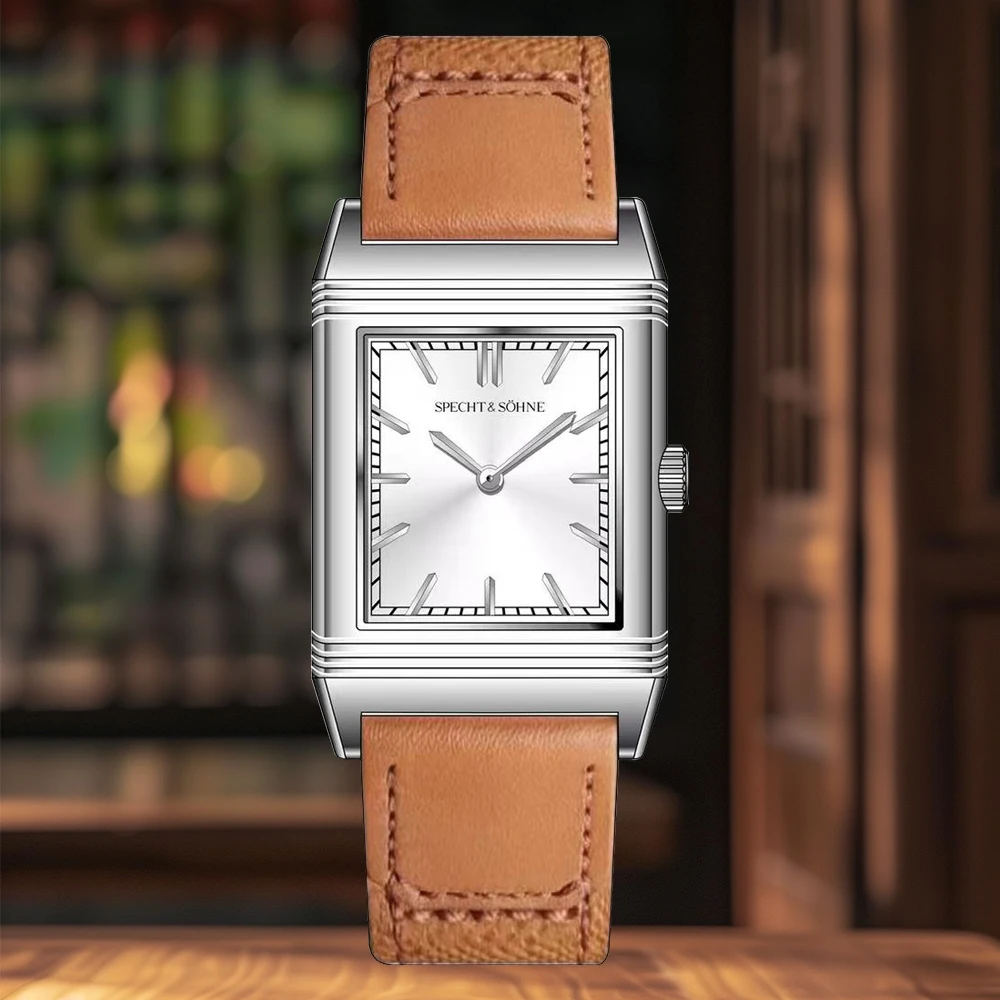
IV. Selecting Your Ideal Dress Watch: Key Considerations
A. Aligning with Personal Style and Wardrobe
Finding the perfect dress watch requires aligning horological choices with personal style and wardrobe considerations:
- Metal tones: Match your watch case (silver-tone, yellow gold, rose gold) with other accessories like cufflinks, belt buckles, and wedding rings for harmony
- Dial color: Consider which colors complement your typical formal wear—white and silver dials offer maximum versatility
- Strap options: Black leather provides traditional formality, while brown offers versatility with navy and gray suits
- Case shape: Round cases offer traditional appeal, while rectangular or tonneau shapes make more distinctive statements
Personal style should guide these choices within the framework of dress watch conventions. Someone who prefers classic formality might choose a slim round watch with a white dial and black leather strap. Someone with more contemporary tastes might select a cushion-shaped case with a blue dial and matching alligator strap.
The visual guide to dress watch styles offers excellent reference points for different aesthetic approaches within the dress watch category.
B. The Significance of Brand Heritage and Craftsmanship
In dress watches particularly, craftsmanship and heritage contribute significantly to both the physical quality and emotional appeal of the timepiece. Fine finishing techniques elevate a watch from mere instrument to art form:
- Movement finishing: Geneva stripes, perlage (circular graining), anglage (beveled edges), and blued screws
- Case construction: Sharp transitions between polished and brushed surfaces, precisely fitted crystals and casebacks
- Dial work: Applied indices, multi-layer construction, hand-applied lacquer or enamel
- Overall coherence: Thoughtful integration of all elements into a harmonious whole
These details might seem minor individually, but collectively they create the refined character expected in fine dress watches. Many heritage brands have perfected these techniques over decades or centuries, resulting in watches that carry both technical excellence and historical significance.
C. Movement Insights: Quartz vs. Mechanical
Dress watches traditionally feature mechanical movements—either manual-wind or automatic—though modern quartz movements offer practical advantages in certain contexts:
Mechanical movements connect wearers to centuries of watchmaking tradition. Their handcrafted nature, with dozens or hundreds of components working in perfect harmony, aligns with the artisanal character of formal accessories. Manual-wind movements are especially slim, allowing for extremely thin dress watch designs, though they require regular winding. Automatic movements offer convenience through self-winding but typically result in slightly thicker cases.
Quartz movements provide superior accuracy and convenience, particularly for occasional-wear dress watches. They require minimal attention, maintain perfect time, and typically cost less than their mechanical counterparts. Modern high-end quartz movements can also be remarkably slim, enabling elegant case designs.
For many enthusiasts, manual-wind dress watches represent the purest expression of traditional horology, creating a ritual of winding that connects wearer to timepiece.
V. The Timeless Allure and Enduring Legacy of Dress Watches
Despite the rise of smartwatches and casual dress codes, the classical dress watch maintains its relevance as an emblem of refinement and tradition. In a world increasingly dominated by technology and transient products, a finely crafted mechanical dress watch stands apart—a tangible connection to horological heritage that can span generations.
“The dress watch represents not merely an instrument of time, but a statement about one’s relationship with time itself—valuing permanence in an ephemeral world.”
This permanence manifests physically through quality construction that can last decades or centuries with proper care. Unlike digital devices rendered obsolete within years, a well-made dress watch follows design principles that have remained relevant for nearly a century.
The psychological appeal is equally significant. Wearing a dress watch signals attention to detail and appreciation for craftsmanship. It completes a formal ensemble while also serving as a private reminder of personal milestones or achievements often associated with such timepieces.
Classic Automatic Dress Watches, Day Date Automatic Watches, Perpetual Calendar Automatic Watches
Price range: $540.60 through $574.60 Select options This product has multiple variants. The options may be chosen on the product pageClassic Automatic Dress Watches, GMT Automatic Watches, GMT Pilot Watches
Price range: $1,240.86 through $1,463.33 Select options This product has multiple variants. The options may be chosen on the product pageClassic Automatic Dress Watches, Thin Automatic Dress Watches
$437.64 Select options This product has multiple variants. The options may be chosen on the product pageClassic Manual Wind Watches, Manual Wind Dress Watches
Price range: $425.50 through $462.50 Select options This product has multiple variants. The options may be chosen on the product page- $104.12 Select options This product has multiple variants. The options may be chosen on the product page
Classic Automatic Dress Watches, GMT Automatic Watches, GMT Dive Watches
Price range: $468.93 through $552.94 Select options This product has multiple variants. The options may be chosen on the product page
These qualities ensure that dress watches remain meaningful in contemporary wardrobes. Whether for significant business meetings, formal celebrations, or any occasion warranting one’s finest attire, the dress watch continues its quiet role as the quintessential formal accessory.
Understanding how to identify a dress watch enables enthusiasts to appreciate these timeless design principles across diverse styles and price points.
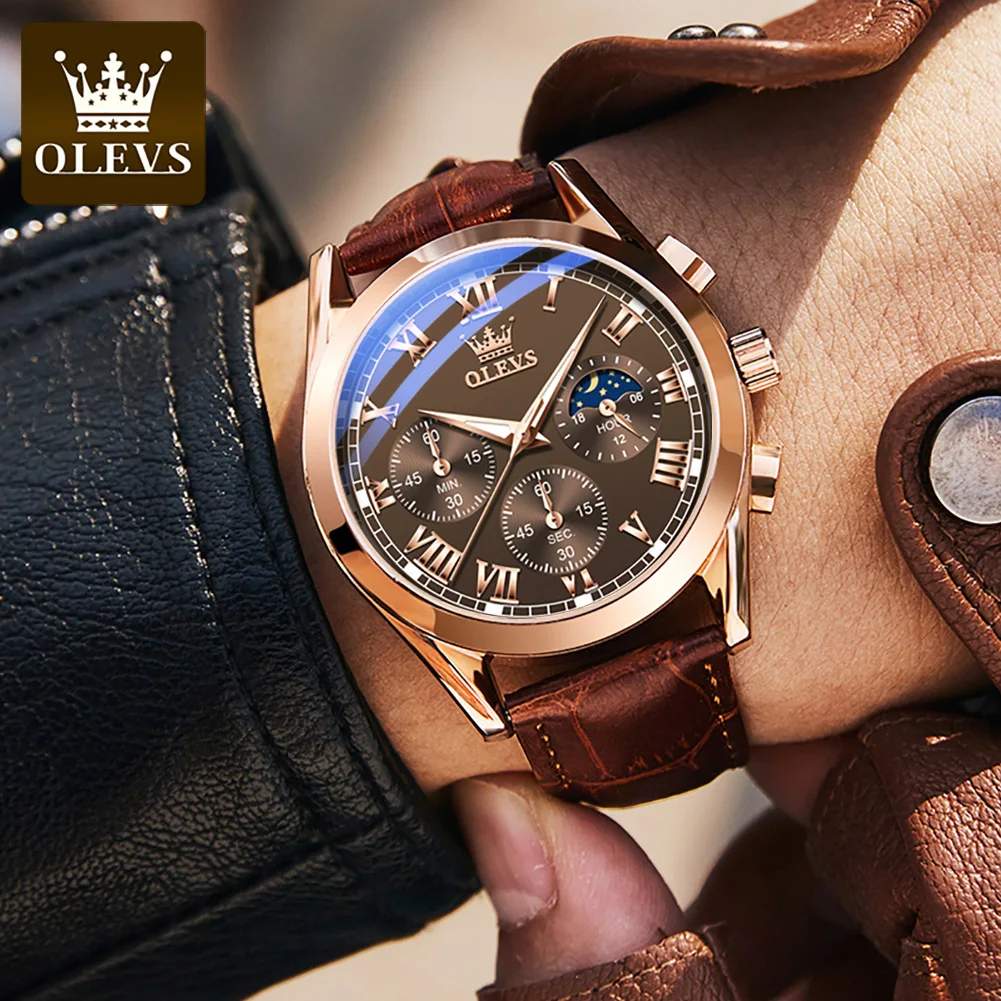
VI. Frequently Asked Questions About Dress Watch Features
A. Common Questions About Dress Watch Design
Can dress watches have metal bracelets instead of leather straps?
Yes, dress watches can feature metal bracelets, though they should be slim, elegant designs rather than bulky sport-style links. Integrated bracelets or Milanese mesh styles can work particularly well for formal watches. Traditionally, leather remains the classic choice, but a well-designed metal bracelet can maintain the required refinement.
What’s the best case size for a dress watch on smaller or larger wrists?
For smaller wrists (under 6.5 inches/16.5cm), dress watches between 34-38mm (1.3-1.5 inches) diameter typically offer ideal proportions. For larger wrists (over 7.5 inches/19cm), sizes up to 40-42mm (1.6-1.7 inches) can maintain appropriate scale. The key is balance—the watch should appear proportional to the wrist rather than following strict size rules.
Is it appropriate to wear a dress watch daily?
While traditionally reserved for formal occasions, many modern dress watches can transition effectively to daily wear, particularly in professional environments. Their understated design often works well with business attire. However, for activities involving water, impacts, or harsh conditions, sportier watches remain more practical choices.
Do dress watches need to be expensive?
Quality dress watches exist across various price points. While fine materials and hand-finished movements increase costs, many manufacturers offer accessible classic automatic dress watches that maintain the essential design principles without requiring significant investment. The key qualities—clean dial, slim profile, refined aesthetic—can be achieved at different price levels.
B. Questions About Dress Watch Versatility and Care
Can I wear a dress watch with casual clothes?
While dress watches are designed for formal attire, many can complement smart casual outfits effectively. The key is context—pairing a dress watch with tailored casual clothes often works well, while extremely casual settings might create stylistic dissonance. Strap changes can help bridge this gap, with more casual leather or textile options softening the formality.
How should I care for my dress watch?
Dress watches generally require gentle handling and protection from water, impacts, and magnetic fields. Leather straps need protection from moisture and regular conditioning to prevent cracking. Mechanical movements benefit from servicing every 5-7 years to maintain accuracy and prevent wear. Storage should involve soft surfaces and protection from extreme temperatures or humidity.
Can I change straps to make my dress watch more versatile?
Absolutely. Strap changes represent one of the most effective ways to adapt a dress watch to different contexts. A black alligator strap maintains maximum formality, while brown leather offers business versatility. Cordovan or textured leather can transition to smart casual settings. Just ensure the replacement straps maintain appropriate thinness and refinement to complement the watch’s character.
Are vintage dress watches good investments?
Quality vintage dress watches often maintain value well, particularly those from established manufacturers with strong heritage. However, collectability depends on numerous factors including rarity, condition, originality, and historical significance. For most enthusiasts, appreciation for design and craftsmanship should guide purchase decisions rather than investment potential alone.

